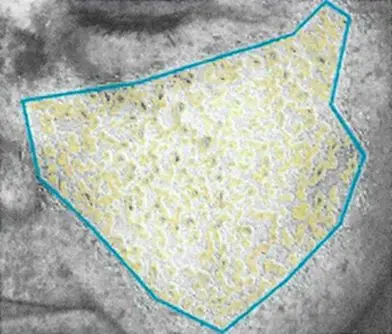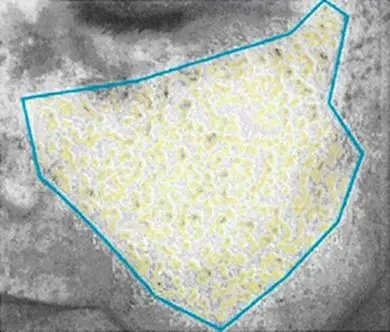| Item | Price | Qty | Total | |
|---|---|---|---|---|
 Loading Cart...
Loading Cart...Best Products to Use After PRP Facial Procedure
Platelet-rich plasma (PRP) is quietly transforming healthcare. Nothing else harnesses the body’s own healing abilities and delivers them in a versatile, non-invasive, quick, safe, and effective manner like PRP can.
If you’ve been offering PRP for skin care in your clinic, you’ve probably seen its amazing benefits. And you may have also been thinking about the best skin care products for your patients after their PRP procedure.
In this article, we’ll provide our recommendations for post-procedure skin care. We’ll also introduce a revolutionary new product that can enhance the results you’re already seeing with PRP.
Skin Care After a PRP Procedure
Immediately following a PRP procedure, your patients may experience temporary side effects like redness, swelling, tenderness, or a feeling of pressure at the injection site. Applying a cold pack to the affected area may help reduce these side effects. Some patients may experience more swelling on the second day, which is a sign that the PRP treatment is working. The swelling should subside over the next couple days.
To prevent complications and maximize results, we recommend staying away from any harsh skin care products for at least 4 hours after the procedure. This gives the PRP time to work. Potentially damaging products include exfoliating agents and chemical peels.
Patients may wash their face that evening (or the next morning) with lukewarm water and a mild cleanser, being careful not to scrub the skin. Drying should also be done carefully. Skin may feel firmer than usual, but it should return to normal within a few days.
Dr. PRP also recommends patients avoid direct heat to the treated area, such as from a blow dryer, the sun, or a hot shower for at least 24 hours. Instruct patients to wear sunblock whenever they need to go outside until their skin is healed.
Patients should also avoid engaging in activities that will get them wet or cause them to sweat, such as swimming and hot yoga. They should also avoid drinking alcohol or taking blood thinners for at least 6 hours. Patients who need to take blood thinners are advised to seek recommendations from their primary healthcare provider.
Introducing Dr. PRP’s Cellulam Post-Procedure Lotion
Our relationship with the sun can be complicated. We rely on it for our health, such as to produce vitamin D, boost serotonin, and strengthen our immune system.
But many people are also concerned about the damaging effects of sun exposure. That’s because overexposure to sunlight has been linked to photoaging, or premature aging of the skin. Photoaging can even lead to skin cancer.
You may have encountered patients who regret not using sun protection in their youth. They come in with photoaging signs like brown spots, wrinkles, or rough, uneven skin. Often, these patients feel hopeless.
While it’s not a cure, PRP offers healing properties that can reverse some of the damage. The healing properties can even be further enhanced with Dr. PRP’s Cellulam Post-Procedure Lotion.
The Dr. PRP team designed the Cellulam Post-Procedure Lotion to reduce and repair the appearance of mild UV damage and sunspots in as little as 4 weeks.
Our secret? Enzymes.
The 3 DNA repair enzymes in Dr. PRP’s Cellulam Post-Procedure Lotion work synergistically to help your patients’ skin heal at the molecular level, not just at the surface. Similar to PRP, the enzymes also support cellular regeneration. The key enzymes include:
- Photolyase (derived from Anacystis nidulans, a species of blue green algae): Photolyase directly removes thymine dimers, which are lesions in the skin created by sunlight exposure. Thymine dimers block DNA replication and are considered a potential factor in the development of skin cancer.
- Endonuclease (derived from Micrococcus luteus, a UV-resistant microbe): Endonuclease initiates indirect removal of thymine dimers. Instead of breaking the bond between the thymine dimers, endonucleases make nicks in the DNA strand on either side of the dimer. The nucleotides with the thymine dimer are then removed, allowing DNA polymerase I to fill in the gap.
- Glycosylase (derived from Arabidopsis thaliana): Glycosylase recognizes and initiates repair of free-radical damage caused by UV irradiation and normal cellular metabolism.
Simply put, the Cellulam Post-Procedure Lotion enhances the outcomes of PRP therapy, which means higher patient satisfaction. We recommend integrating the product into existing in-office skin care regimens and encouraging patients to continue using the product twice per day.
Here is an example of the results you and your patients can expect when using this lotion:
Before: 342 UV spots

After 4 weeks: 271 UV spots

Maximize Your Patient’s Potential With PRP and Cellulam Post-Procedure Lotion
PRP is the medical innovation many patients have been looking for. It’s natural and effective, and it boasts a safety profile that simply can’t be matched by other treatments. It’s no wonder skin care and medical clinics are seeing an increased demand for PRP treatments.
If you’re treating patients for skin problems, be sure to check out Dr. PRP’s new Cellulam Post-Procedure Lotion. Made with only the highest quality ingredients, the Cellulam Post-Procedure Lotion will enhance patient outcomes and improve satisfaction.
Are you ready to bring Dr. PRP’s Cellulam Post-Procedure Lotion to your clinic? Call us at (844) 377-7787 (DR-PRP-US) for more information or click here to purchase now. If you’re new to PRP, learn more about our centrifuges and kits.


